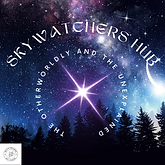Explore the Ultimate Hub for Stargazing Enthusiasts
- Megan Fosco
- Jun 11
- 4 min read
Stargazing is more than just a pastime; it’s a passion that brings people together. Whether you're an amateur astronomer or a seasoned stargazer, exploring the cosmos can be both thrilling and educational. This blog post delves into the ultimate hub for stargazing enthusiasts and how connecting with like-minded individuals can deepen your appreciation for the night sky.
Connecting with the Astronomy Enthusiasts Community
One of the most rewarding aspects of stargazing is joining an astronomy enthusiasts community. These communities provide a platform for individuals to share their experiences, discoveries, and tips. From local observatories to online forums, there are plentiful opportunities to engage with fellow sky-lovers.
There are numerous organizations, including the American Astronomical Society and the International Astronomical Union, which host events, lectures, and star parties. Star parties are especially fun, as they offer a chance to observe celestial objects through telescopes set up by various enthusiasts. You can learn how to use different types of telescopes and gain insight into celestial phenomena that you might not have observed on your own.

Joining a community allows for shared knowledge. For instance, many members will have different experiences with various telescopes and equipment. You can get hands-on recommendations for what to buy, what to look out for, and even tips on how to improve your stargazing skills.
Essential Equipment for Stargazing
To make the most of your astronomical adventures, having the right equipment is crucial. While you can enjoy stargazing with just your eyes, investing in some tools can elevate your experience. Here are a few essentials to consider:
Telescope: A good quality telescope can help you see planets, stars, and other celestial bodies in incredible detail. If you’re just starting, a beginner-friendly telescope that’s easy to set up and use might be your best bet.
Binoculars: If you're not ready to purchase a telescope, a pair of binoculars can still provide great views of the night sky. They are portable and easy to use, making them perfect for beginners.
Star Maps and Apps: With the advancements in technology, various applications can turn your smartphone into a stargazing guide. Popular options, such as SkySafari or Star Walk, provide real-time updates on celestial events and allow you to identify constellations and stars.
Red Flashlight: Preserving your night vision is essential when stargazing. A red flashlight can help you read maps and navigate your equipment without blinding yourself.
Notebook and Pen: Keeping a stargazing journal is a great way to track your observations. Documenting what you see can help you learn and make connections in the astronomy community.

Best Locations for Stargazing
Finding the right location for stargazing is vital. Light pollution and atmospheric conditions can hinder your experience. Here are some of the best locations to consider:
National Parks: Many national parks across the country are designated as Dark Sky Parks. These areas have strict regulations on light pollution, allowing for optimal viewing conditions. Parks like Big Bend National Park in Texas and Death Valley National Park in California are popular choices.
Remote Areas: If you can find open fields away from city lights, you can create your own stargazing spot. Check out rural areas or the outskirts of towns, where streetlights are limited.
Observatories: Visiting local observatories can provide access to high-quality telescopes and knowledgeable staff. Many observatories host public viewing nights where you can see celestial objects through professional telescopes.
Your Backyard: If you can’t travel far, stargazing right in your own backyard can be just as fulfilling. Set up your telescope or find a comfortable spot to lie down and enjoy the view. Just make sure to reduce light pollution in your area as much as possible.

Popular Events and Gatherings
Participating in stargazing events is a wonderful way to meet fellow enthusiasts and learn from each other. Here are a few popular events you might consider:
Meteor Showers: Events like the Perseids and Geminids meteor showers attract stargazers from all over. Knowing when these showers occur allows you to prepare for an evening of breathtaking shooting stars.
Solar Eclipses: Witnessing a solar eclipse is a once-in-a-lifetime experience. Various organizations often organize events to provide resources and equipment to safely view this magnificent event.
Star Parties: As previously mentioned, star parties allow people to gather, share equipment, and enjoy the night sky together. You might find these hosted by local astronomy clubs or community organizations.
Astronomy Festivals: Annual festivals are held in various locations, bringing together enthusiasts, speakers, and vendors to share knowledge and celebrate astronomy. These events typically include workshops, lectures, and chances to observe through professional telescopes.
How to Expand Your Astronomical Knowledge
Increasing your knowledge of astronomy can enhance your stargazing experience. Here are some practical ways to learn more:
Online Courses: Websites like Coursera and Skillshare offer online courses on various astronomy topics, from basic stargazing to advanced astrophysics.
Books and Magazines: Reading books about astronomy can provide in-depth knowledge. Consider well-reviewed titles such as "NightWatch: A Practical Guide to Viewing the Universe" or subscriptions to magazines like "Sky & Telescope" for ongoing insights.
YouTube Channels and Podcasts: There are numerous YouTube channels and podcasts that focus on astronomy. Channels like PBS Space Time and podcasts like "StarTalk" bring high-quality content straight to your screens and ears.
Networking: Don’t hesitate to ask fellow enthusiasts for advice and tips. The astronomy community is generally open and willing to help newcomers learn the ropes.
An essential part of deepening your understanding of astronomy is connecting with resources like skywatcher's hub to tap into extensive insights. This platform is packed with valuable information about events, guides, and tips that can vastly enrich your astronomical experience.
Joining the Astronomy Enthusiasts Community
In conclusion, connecting with an astronomy enthusiasts community enriches your stargazing experience. The right tools, locations, events, and resources can elevate your appreciation and understanding of the cosmos. By collaborating with other enthusiasts, you increase your chances of learning something new and discovering the beauty of the universe that sparkles above us. The stars await—so grab your telescope, binoculars, or just a blanket, and enjoy the mesmerizing spectacle that is the night sky.

.png)









Comments